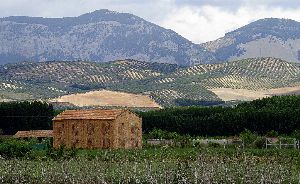This article explores the direct use of alperujo - olive mill waste - as a soil amendment in olive groves. Backed by an 18-month study in Spain, it evaluates soil impact, carbon levels, and nutrient balance, highlighting the potential of this circular farming practice for small producers. Find out more about Olive Mill Waste.
Thinking about making your own olive oil? This guide from The Olive Centre explains what beginners must understand before starting. Budget machines under $10,000 often fail to produce real extra virgin olive oil, which requires proper crushers, malaxers, and decanters. The article covers each stage of extraction, from breaking down olive pits to controlled malaxation and centrifugal separation.
Extra virgin olive oil (EVOO) owes much of its flavor, nutrition, and shelf life to the way it is extracted. One of the most critical steps in this process is adjusting the decanter centrifuge, a machine that separates oil from olive paste. This article explores how key settings—such as the choice between two-phase or three-phase systems and the differential speed (Dn) between the drum and screw—directly shape the quality of olive oil.
Olive trees often swing between heavy and light crops. This article explains why biennial bearing happens and how growers can manage it for steadier harvests.
This summer cropping season is facing unprecedented challenges in fertiliser supply. Availability of MAP fertiliser (monoammonium phosphate) and DAP fertiliser (diammonium phosphate) is expected to remain extremely limited worldwide, with serious implications for growers planning their nutrient programs.
The Australian olive oil industry has experienced rapid growth over the past three decades, evolving into a significant agricultural sector. With rising domestic demand, a strong export presence, and a reputation for high-quality extra virgin olive oil (EVOO), understanding the distribution of olive trees across the country provides essential insight into production capacity and regional specialisations.
Mechanical trunk shakers have transformed olive harvesting in modern olive groves. A new study: Damping behavior of olive trees under trunk shaking (Ghonimy, Alharbi & Ibrahim, 2025) provides growers with the first detailed breakdown of how vibration energy moves through olive trees and the soil beneath them.
The findings reveal how attachment height, trunk diameter, and the tree-soil interaction determine whether ...
Trunk shakers apply forced vibration at the tree trunk, which propagates through the canopy and detaches ripe olives. However, the success of this process isn't solely dependent on the machine’s frequency or power. The geometry of the tree itself... particularly the inclination angle of its branches... plays a pivotal role in determining how efficiently that vibration moves through the canopy.....
As the world's leading olive oil producer, Spain plays a pivotal role in the global market, contributing around 40-50% of worldwide supply. After a challenging period marked by droughts and extreme temperatures that halved production in recent years, the 2024/2025 harvest signaled a strong recovery. Now, with the 2025/2026 crop year on the horizon, industry experts and producers are optimistic about sustained growth. This article explores the ...
Mechanical tree shakers are the backbone of modern olive and nut harvesting, delivering the high-frequency vibrations needed to detach fruit efficiently. But the same forces that maximise yield also put extreme stress on the machine itself. Without a structured preventive-maintenance program, vibration can quickly loosen fasteners, wear through hydraulic hoses, rub down electrical insulation, and accelerate pump and bearing failure.










